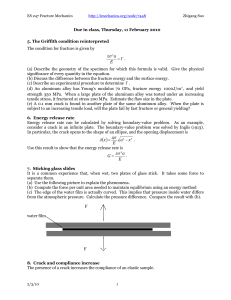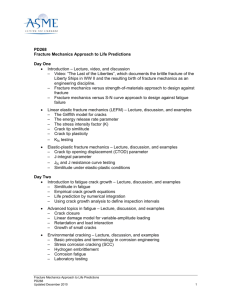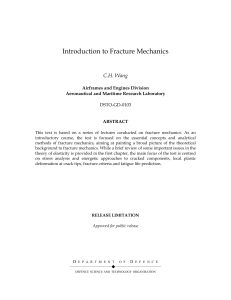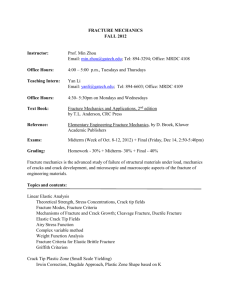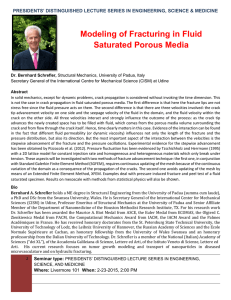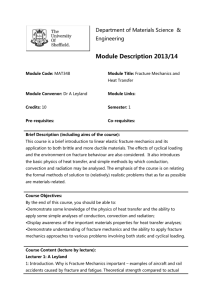1/02 650:652 Composite Materials, Fracture Mechanics, and
advertisement
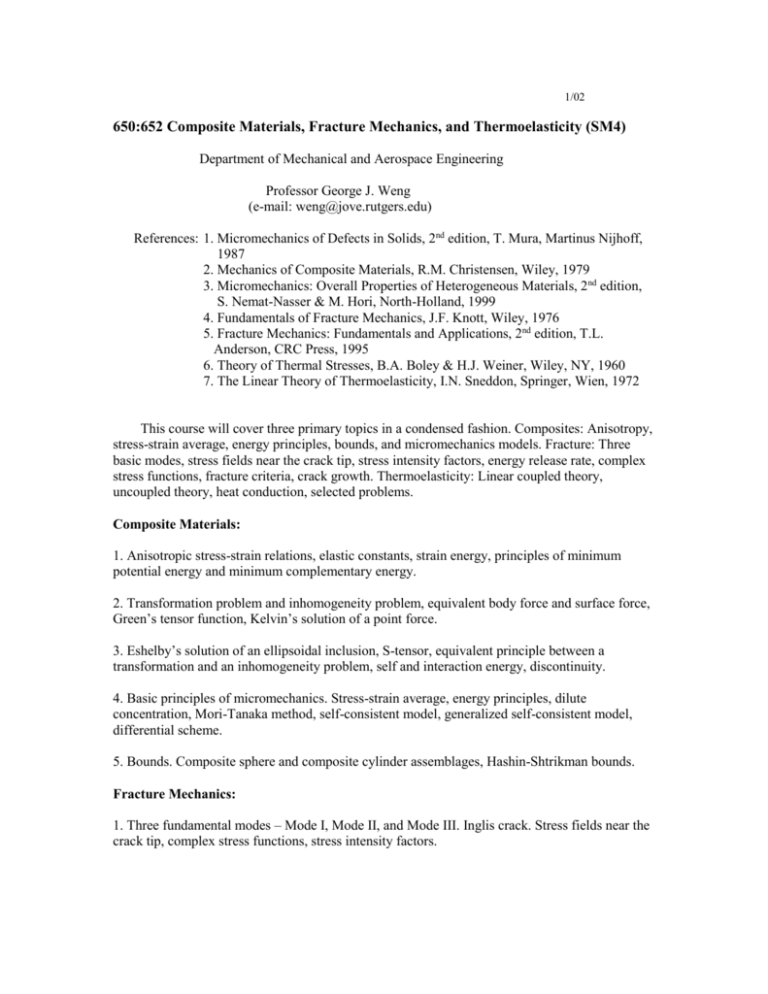
1/02 650:652 Composite Materials, Fracture Mechanics, and Thermoelasticity (SM4) Department of Mechanical and Aerospace Engineering Professor George J. Weng (e-mail: weng@jove.rutgers.edu) References: 1. Micromechanics of Defects in Solids, 2nd edition, T. Mura, Martinus Nijhoff, 1987 2. Mechanics of Composite Materials, R.M. Christensen, Wiley, 1979 3. Micromechanics: Overall Properties of Heterogeneous Materials, 2nd edition, S. Nemat-Nasser & M. Hori, North-Holland, 1999 4. Fundamentals of Fracture Mechanics, J.F. Knott, Wiley, 1976 5. Fracture Mechanics: Fundamentals and Applications, 2nd edition, T.L. Anderson, CRC Press, 1995 6. Theory of Thermal Stresses, B.A. Boley & H.J. Weiner, Wiley, NY, 1960 7. The Linear Theory of Thermoelasticity, I.N. Sneddon, Springer, Wien, 1972 This course will cover three primary topics in a condensed fashion. Composites: Anisotropy, stress-strain average, energy principles, bounds, and micromechanics models. Fracture: Three basic modes, stress fields near the crack tip, stress intensity factors, energy release rate, complex stress functions, fracture criteria, crack growth. Thermoelasticity: Linear coupled theory, uncoupled theory, heat conduction, selected problems. Composite Materials: 1. Anisotropic stress-strain relations, elastic constants, strain energy, principles of minimum potential energy and minimum complementary energy. 2. Transformation problem and inhomogeneity problem, equivalent body force and surface force, Green’s tensor function, Kelvin’s solution of a point force. 3. Eshelby’s solution of an ellipsoidal inclusion, S-tensor, equivalent principle between a transformation and an inhomogeneity problem, self and interaction energy, discontinuity. 4. Basic principles of micromechanics. Stress-strain average, energy principles, dilute concentration, Mori-Tanaka method, self-consistent model, generalized self-consistent model, differential scheme. 5. Bounds. Composite sphere and composite cylinder assemblages, Hashin-Shtrikman bounds. Fracture Mechanics: 1. Three fundamental modes – Mode I, Mode II, and Mode III. Inglis crack. Stress fields near the crack tip, complex stress functions, stress intensity factors. 2. Fracture criterion, energy balance during crack growth, Griffith theory, energy release rate, equivalence between strain energy release rate and stress intensity factor, critical stress intensity factor, crack growth resistance curve (R-curve). 3. J-integral, dynamic fracture, fatigue crack propagation, mixed mode fracture and fatigue. Thermoelasticity: 1. Thermal expansion, Duhamel’s principle, basic equations, Fourier’s law, thermodynamic relations. 2. Selected problems. Plane strain, plane stress, plate with circular hole in uniform heat flow, point heat source, wave propagation. Grading guide: Homework 20% Mid-term exam 40% Final exam 40%



